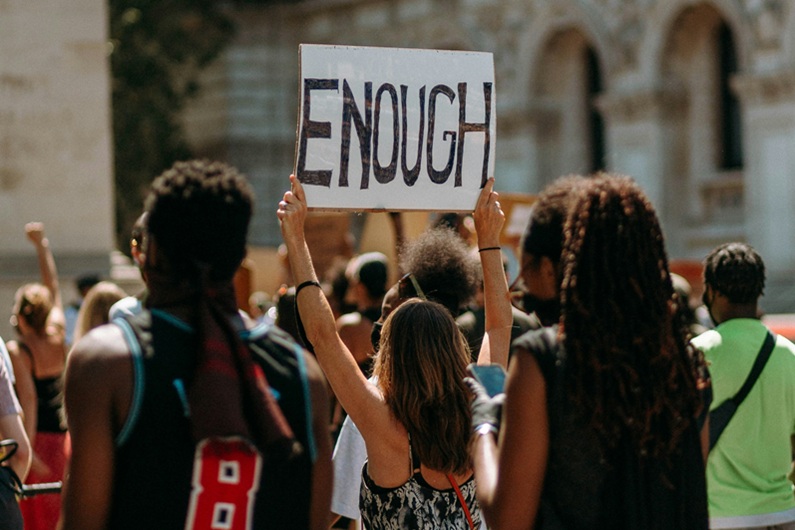As people across the U.S. mobilize for the No Kings Day protests tomorrow, I want to offer a few protest safety tips to help you prepare.
Whether this is your first protest or your fiftieth, it’s worth taking the time for some important considerations. Protests can be powerful—but they also come with risks, especially as we witness increasing surveillance and authoritarian tactics, including the deployment of military force against civilians.
I know many are feeling a great deal of fear right now. That’s understandable. But the cost of not showing up to this moment is far too high.
Protests send a clear message that we will not acquiesce or accept having free speech and due process eroded.
The protest safety tips I’ve put together are to help you prepare with care—not to create fear, but to empower you with practical tools in this critical moment.
Disclaimer: These tips are drawn from a range of trusted sources, including the links below, but are not exhaustive or expert advice. Every protest is different. Please use your judgment, assess your risk, and prioritize your safety and that of those around you.
Know Your Risk + Risk Tolerance
If you hold relative safety and privilege—if you’re white and able-bodied—this is the time to rise with courage and conscience. We need people willing to use their voices and bodies in defense of justice and each other.
That said, everyone’s risk threshold is different. Before heading out, consider:
- What is my current level of risk tolerance?
- Do I have legal, medical, citizenship, or employment concerns to consider?
- How will I respond if a situation begins to escalate?
- Am I willing to risk arrest?
- Am I willing to put my body on the line to protect someone more vulnerable?
General Protest Safety Tips
- Go with a buddy or small group.
- Decide on a meeting point in case you get separated.
- Know the general protest route and possible exits.
- Stay alert to shifts in energy, police behavior, or agitators.
- De-escalate and avoid engaging with agitators and provocateurs.
- Follow the leadership of frontline organizers—especially those from impacted communities.
What to Bring to Protest (and What to Leave at Home)
Before You Go:
- Write an emergency contact on your arm with a permanent marker.
- Know your rights and how to respond if detained or questioned.
- Wear solid colors, long sleeves, pants, and sturdy shoes.
- Consider photo ethics and implications for privacy.
- Decide whether to bring your phone. If yes:
- Keep it off or in airplane mode.
- Turn off GPS, Face/Touch ID, and use a numeric passcode instead.
Consider Bringing:
- Water + snacks
- ID (if you feel safe carrying it)
- Mask or face covering (to reduce facial recognition + for COVID safety)
- Protective eyewear like goggles (in case of tear gas)
- Basic first aid (band-aids, saline, etc.)
- Ear plugs
- Vital medications (e.g., rescue inhaler)
- External battery or charger
- Cash
Leave behind:
- Contact lenses (wear glasses instead)
- Jewelry, smart watches, or items of value
- Anything you wouldn’t want lost, searched, or confiscated
- Unnecessary personal info—on your person or your phone
Other Resources with Protest Safety Tips
Here are two helpful resources to review and share:
- ACLU’s Protesters’ Rights Guide
- How to Protest Safely: What to Bring, How to Act, How to Stay Safe (Wired)
- How to Protest Safety in the Age of Surveillance (Wired)
This is a time to reach deep and tap into fierce love, not fear. Let’s be mobilized by what we believe in—and by the people we’re standing alongside.


Seeking Meaningful Travel Without the Overwhelm?
Success! Look for my welcome email in your inbox. If you don't see it, check your SPAM!